
Ready prompt T-shirts!
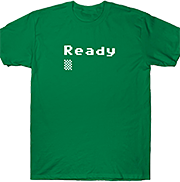
ZX Spectrum T-shirts!
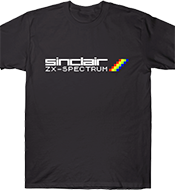
ZX81 T-shirts!
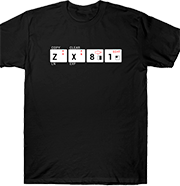
Spiral program T-shirts!
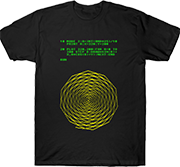
Atari joystick T-shirts!
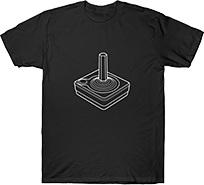
Arcade cherry T-shirts!
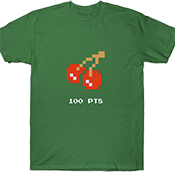
Battle Zone T-shirts!
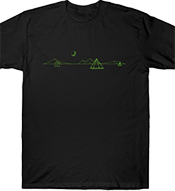
Vectrex ship T-shirts!

Competition Pro Joystick T-shirts!
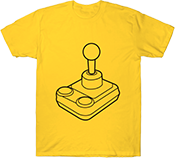
Atari ST bombs T-shirts!

Elite spaceship t-shirt T-shirts!
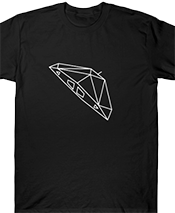
C64 maze generator T-shirts!
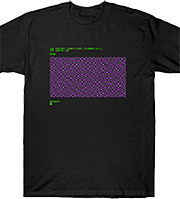
Moon Lander T-shirts!
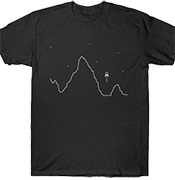
Pak Pak Monster T-shirts!

BASIC code T-shirts!

Vector ship T-shirts!

Pixel adventure T-shirts!
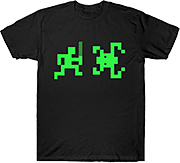
Breakout T-shirts!
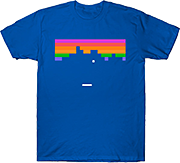

|
|

Welcome to old-computers.com, the most popular website for old computers.
Have a trip down memory lane re-discovering your old computer, console or software you used to have.
There are actually 1286 systems in the museum.
SHOW ME A RANDOM SYSTEM !
 LATEST ADDITIONS LATEST ADDITIONS
|
 ECD CORPORATION Micromind ECD CORPORATION Micromind
The Micromind was a very innovative machine ahead of its time ! But despite the small group working on the machine, prototyping and developing, and pushing the limits of the time, the machine never shipped. Apparently only a few prototypes were produced.
Development began as early 1975/1976 but commercial adverts appeared only in 1977.
One of the main features of the Micromind was its innovative (for the time) redefinable characters. Up to 120 characters could be software redefined by the ...
|
 |
 SEMI-TECH (STM) PC SEMI-TECH (STM) PC
This extremely rare computer is Portable PC (IBM compatible) conceived in the same plastic case as the Pied Piper, released by the same company in 1983. This computer incorporates a lot of features in a compact case, which was quite innovative at the time: built-in LCD display, printer, modem, phone and disk drives !
The STM PC is based on an Intel 80186 processor and two quadruple-density disk drives. The processor is faster than the one used in the IBM PC, a...
|
 LOGICAL MACHINE CORPORATION (LOMAC) Goliath LOGICAL MACHINE CORPORATION (LOMAC) Goliath
Logical’s Goliath is a server or disk file storage device has it was described at the time.
It has a capacity for 10 MByte, 30 MByte or 50 MByte of fixed disk storage and 10 MBytes of removable storage. The unit, which also houses the controller, may have memory ranging from 64K to 256K and capacity for up to 20 terminals.
Up to 20 Tina or David computers can link to Goliath as a distributed data processing system.
For ...
|
 LOGICAL MACHINE CORPORATION (LOMAC) Adam LOGICAL MACHINE CORPORATION (LOMAC) Adam
The Adam was the first computer released by Logical Machine Corporation (LOMAC) in 1975. In 1978 they also produced Tina which stands for "TINy Adam". In 1983 Logical released the David, and the L-XT in 1983. There was also the Goliath, a data storage server with 5MB hard drive. Goliath could be connected to up to 20 Davids or Tinas. David and Goliath names makes a clear reference to the mythic...
|
 LOGICAL MACHINE CORPORATION (LOMAC) Tina LOGICAL MACHINE CORPORATION (LOMAC) Tina
The Adam was the first computer released by Logical Machine Corporation (LOMAC) in 1976. In 1978 they produced Tina which stands for "TINy Adam". It seems to have the same specs as David but with two 8'' floppy disk drives. There was also the Goliath, a data storage server with 5MB hard drive. Goliath could be connected to up to 20 Davids or Tinas. David and Goliath names makes a clear reference to the mythical story found in the biblical Book of S...
|
 LOGICAL MACHINE CORPORATION (LOMAC) L-XT LOGICAL MACHINE CORPORATION (LOMAC) L-XT
The L-XT was the last computer released by Logical Business Machines, after the Adam, the David, the Tina and the Goliath in 1982. It was announced at the 1983 COMDEX Fall in Las Vegas, and commercially available in March 1984.
The L-XT uses a 16-bit Intel 8088 CPU with 192KB RAM, and equipped with a 5.25'' floppy drive unit (320 KB capacity) and a 10 MB hard disk (upgradable to 60 MB)...
|
 LOGICAL MACHINE CORPORATION (LOMAC) David LOGICAL MACHINE CORPORATION (LOMAC) David
The David is not the first computer released by Logical Business Machines. In 1974, LOMAC (Logical Machine Corporation) released the Adam. Some times later they also produced Tina (for TINy Adam). There was also the Goliath, a data storage server with 5MB hard drive. Goliath could be connected to up to 20 Davids or Tinas. David and Goliath names makes a clear reference to the mythical story found in the biblical Book of Samuel.
The David is powered by a 16-bit Intel 8086 CPU w...
|
 |
 GESPAC Gescomp 720 / 730 GESPAC Gescomp 720 / 730
GESPAC SA was a Swiss company who designed the G-64/96 Bus in 1979.
This interface bus concept provides a simple way to interface microprocessor modules with memory and peripheral modules on a parallel bus. The G-64/96 Bus uses a simple, yet modern and powerful interface scheme which allows a higher level of functionality from the single height Eurocard form factor. The low overhead of the G-64/96 Bus interface greatly eases the design of custom boards by the User. This is why, even many year...
|
 WELECT W86 WELECT W86
The W86 is a french computer released in 1983 by Welect. It's the second computer released by Welect after the W80.2.
The W86 is powered by an Intel 8086 (hence its name) to catch up with the IBM PC compatible trend of the moment and is thus able to run MS-DOS. But the W86 is also equipped with a Z80A to also be CP/M 86 compatible. It's thus an hybrid machine typical of the mid-80s when the professional industry was moving from CP/M to MS-DOS.
There are 128...
|
 |
 SMOKE SIGNAL CHIEFTAIN COMPUTERS The Chieftain 9822 SMOKE SIGNAL CHIEFTAIN COMPUTERS The Chieftain 9822
In 1978, Smoke Signal Chieftain Computers (SSCC) released their first computer: The Chieftain, followed in 1980 by the Chieftain Business System, an update to the original Chieftain.
At the start of 1982, the company introduced the Chieftain 9822, an update to the Business System featuring the same processor and static RAM options, as well as the same nine-slot bus equipped with the first two Chieftains.
The system could be equipped with either two 8-inch or two 5.25-inch floppy drives and...
|
 RANDOM SYSTEMS RANDOM SYSTEMS
|
 NORTHSTAR Advantage NORTHSTAR Advantage
NorthStar launched this indestructible all-in-one system in 1982.
The Advantage combined the well known (at the time) NorthStar 5.25 floppy disc sub-system with a high-resolution display and a durable keyboard. The Advantage also had it's own bus with it's own set of optional I/O card and a 8088 co-processor card for comparability with the newly released IBM PC software. Sadly, the card was delivered with MS-DOS ver.1 which wasn't compatible with the IBM-PC PC-DOS and very few programs were d...
|
 |
 FEEDBACK ABACUS Educational Computer FEEDBACK ABACUS Educational Computer
The computer system consisted of two units - EC362 and EC372 - that could be used independently or linked together to provide a complete system for computer education.
To enable the input of relatively long programs and the output of computed results, an ASR33 Teletypewriter with 8-hole punched paper tape input and output was connected to the two linked units. In addition, a textual output was printed on an 8 inch (200 mm) wide paper roll.
Unit EC362 was the Arithmetic Unit ...
|
 |
 ALTOS COMPUTER SYSTEMS ACS-586 / 686 ALTOS COMPUTER SYSTEMS ACS-586 / 686
The ACS-586 was a multipost system which could handle 5 users or more (8) with optional cards. To connect the terminals, there were several RS232 ports at the back of the system, labeled JA, JB, JC, JD, JE, etc... The ports not used by the terminals could be used to connect any serial peripheral, i.e. modem or printer.
The 186 was the first computer from a big company to use Xenix as its native operating system. Xenix was the Microsoft "adaptation" of Unix.
This system was quite well desi...
|
 COMMODORE C64 Aldi COMMODORE C64 Aldi
Externally, the C=64 Aldi had same case colour as a standard C=64 but the keyboard was light grey, like the future C=64G and C=64C.
Internally, the motherboard was redesigned to minimize production costs, most of the TTL chips were removed, replaced with a new MMU chipset. First releases of this board had some compatibility problems with C=64 peripherals - they lacked the 9V user port voltage, ...
|
 CONITEC Prof80 CONITEC Prof80
This computer was never sold in computer stores. It is an homebrew machine built around an unique board called PROF80.
The Prof 80 was a CPM Board for CP/m 2.2 or (later) 3.X., manufactured by Conitec, Dieburg, Germany. There is also a branch in US. The company still exists, and the chief designer of the board, Joachim Hanst, is still working there.
It was sold in France in kit form by the Pentasonic stores chain. User had to solder all the components onto the bare board.
The PROF80 bo...
|
 ACT Apricot F2 / F10 ACT Apricot F2 / F10
Unlike the Apricot F1 which was a kind of bridge between the home-computing and the professional markets, the F2 and the F10 were clearly marketed as business machines.
They were quite similar to the F1, but included an extra expansion slot, more memory and larger storage capacity : two disk-drives for the F2 and one disk-drive and a 10MB hard-disk for the F10.
Like the F1, the F2 and F10 had an infra-red interface for the keyboard and the mouse/trackball ...
|
 PALLADIUM Video-Computer-Game PALLADIUM Video-Computer-Game
The Palladium Video-Computer-Game is one of the many systems "software-compatible" with the Emerson Arcadia 2001.
Though, the Emerson Arcadia 2001 is the most popular system of this console group, it was not necessarily at the origin of it. Things must be seen differently. Philips / Signetics developped a hardware platform to demonstrate the possibilities of their Signetics 2650 & 2636 chipsets. Somehow, this hardware was licenced (by Philips?) to many th...
|
 NEC PC Engine Super Grafx NEC PC Engine Super Grafx
Rumoured to be a follow up to the PC Engine, the Super Grafx turned out to be merely an update. It was released without any warning by NEC and never found a place in the marketplace because earlier PCE consoles were still being manufactured at the same time.
Despite having four times the RAM, it featured the same 8 bit processor and sound capabilities as the PC Engine, although it now had an extra GPU. Having two GPUs meant the Super Grafx could display ...
|
 BRASCOM BR-1000M BRASCOM BR-1000M
The BR1000Ms were Brazilian professional computers.
The BR1000M's hardware was the same as Cromemco's, and the so-called BR1000 operating system was in fact Cromix, a UNIX flavor designed to run on Cromemco's hardware.
Two models of the BR1000M were available: one with a Z80A processor at 4 MHz, capable of handling up to 4 dumb terminals, one of which was also used as the system console; and a "high end" model with a Z80B processor at 6 MHz, capable of handli...
|
 ATARI 1450 XLD ATARI 1450 XLD
The Atari 1450 XLD has the same characteristics as the Atari 1400 XL.
Like the 1400 XL, it has a built-in modem (Bell 103 compatible, 300 baud) and the speech synthesiser chip (SC-02). Contrary to the other Atari, it uses a parallel disk drive controller (a much faster arrangement) instead of the SIO interface.
Apparently The 1450 was not released because they were having problems getting the parallel disk drive controller to work properly....
|
 LATEST COMMENTS LATEST COMMENTS
|
|
|
|
 |
 |
 |
HEWLETT PACKARD HP-9825
I bought (using UK company money!) an HP 9825 in 1977 and programmed it to help plan routes for underseas telecommunications cables. It was my first (and last!) use of HPL, with all my previous programming being with Fortran. The single-line display made programming a real challenge! To further complicate my task, I discovered a few bugs. With everything on ROM, there was no easy way to address them. I ended up spending a few days in HP''s factory at South Queensferry near Edinburgh going through the bugs I''d identified. Not too surprisingly, HP changed to Basic language for later versions of the novel desktop computer.
|
 |
|
 |
|
|
|
|
 |
 |
 |
BRITISH MICRO Mimi 802 / 803 / 804
I have a Mimi 801/802 which is currently undergoing restoration. I am wondering if anyone has or knows of the existence of a schematic layout for the motherboard. Thanks
|
 |
|
 |
|
|
|
|
 |
 |
 |
MBO Tele-Ball IV
The MBO Teleball IV has a size of depth, width, height: 16x30.5x9 cm.
Weight follows.
CPU is a AY-3-8500
circuit could be similar to this
http://www.pong-story.com/GIMINI1978.pdf
score 0-15 (4bit)
|
 |
|
 |
|
|
|
|
 |
 |
 |
SHARP PC-5000
Does anyone know the exact name/part number of the plain paper print cartridge? They originally sold for $5.99 so I think many were made, or maybe another brand used the same type of cartridge. This is the "one time use" plain paper cartridge. I have one (only one) and don''t see any specific model or part number on it.
|
 |
|
 |
|
|
|
|
 |
 |
 |
ACORN COMPUTER BBC Master AIV
Chris Whytehead''s Acorn collection, and his website with details of the BBC AIV, is now looked after by the Center for Computing History: https://www.computinghistory.org.uk/news/34175/Acorn-Collection-Donated/
|
 |
|
 |
|
|
|
|
 |
 |
 |
S.H.G. Black Point (FS-1003/FS-2000)
The FS-1003 was definitly earlier than 1982. This Pong GI-Chips was used mainly until 1980. After there was coming a lot better system to the market.
I have also one but the Version FS-2000 and this was a 1978 device. Some information about you can find on following page:
https://www.gamescore.ch/en/shg-black-point-fs-2000
|
 |
|
 |
|
|
 RANDOM SOFTWARE TITLES RANDOM SOFTWARE TITLES
|
_s.png)
|
 game - 3d - shoot them up - space - star trek game - 3d - shoot them up - space - star trek
|
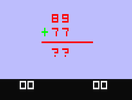
|
 game - mathematics - mind games game - mathematics - mind games
|
|
| 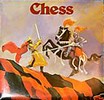
|
 game - chess - mind games game - chess - mind games
|

|
 game - shoot them up - vector graphics game - shoot them up - vector graphics
|
%20(Atari)%20%5b%21%5d_1_s.png)
|
 game - dogfight - duel - plane - tank game - dogfight - duel - plane - tank
|

|
 game - pirate - Scott Adams adventure games - text interface - text only game - pirate - Scott Adams adventure games - text interface - text only
|
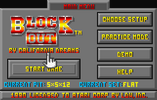
|
 game - puzzle game - puzzle
|
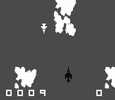
|
 game - plane - shoot them up - vertical scrolling game - plane - shoot them up - vertical scrolling
|
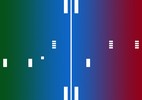
|
 game - ball and paddle - sport - tennis game - ball and paddle - sport - tennis
|

|
 game - shoot them up - vertical scrolling game - shoot them up - vertical scrolling
|

|
 game - kart - racing game - kart - racing
|
|
| 
|
 game - maze - platform game - maze - platform
|
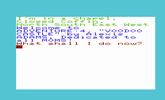
|
 game - adventure - Scott Adams adventure games - text interface - text only game - adventure - Scott Adams adventure games - text interface - text only
|
|
| 
|
 game - car - racing game - car - racing
|

|
 game - ball and paddle - breakout game - ball and paddle - breakout
|
 RANDOM ADVERTS RANDOM ADVERTS
|
|
|







